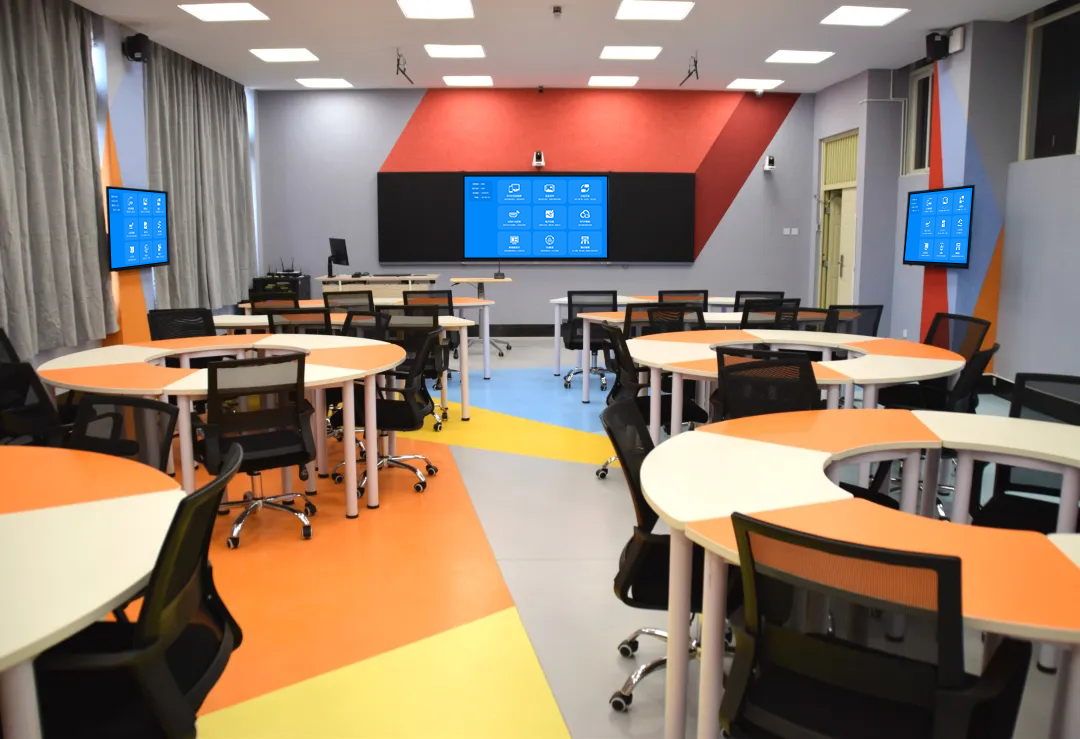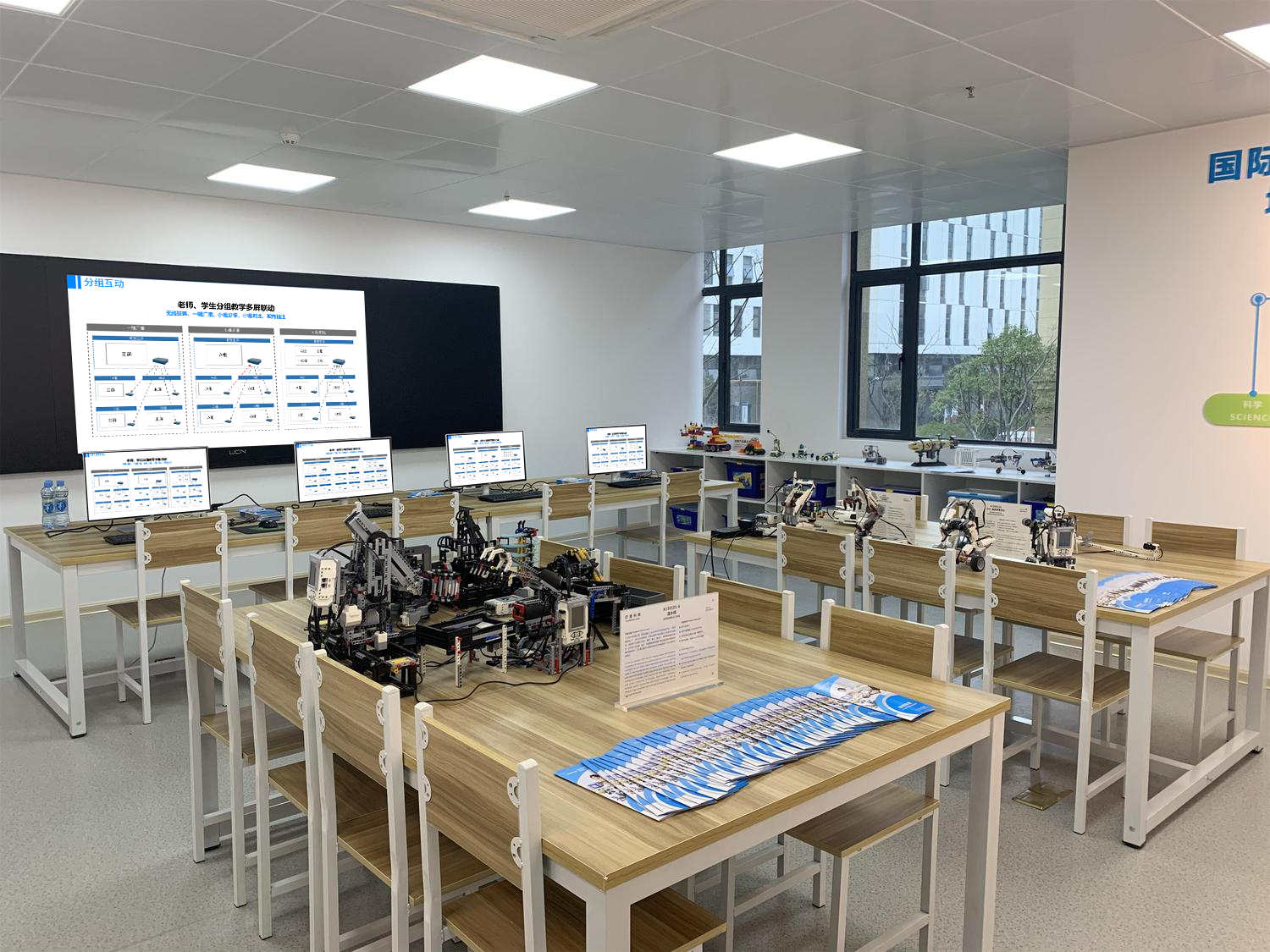How to Build an Interactive Classroom: From One-Way Lecturing to Two-Way Learning
Traditional classrooms often face the dilemma of “teachers tired of lecturing, students bored of listening” — courseware is written with chalk, demonstrations rely on USB drives for file transfer, and questions wait for raised hands. In-class interaction feels like “one-way transmission,” leading to low student engagement. However, a set of screen mirroring devices adapted for interactive classrooms can break this limitation, enabling instant courseware transfer, idea sharing, and feedback synchronization. Covering scenarios such as daily teaching, group exploration, and result presentations, it truly “animates” the classroom.
I. 3 Major Interaction Pain Points in Traditional Classrooms, Solved Easily by Screen Mirroring Devices
1. Pain Point 1: Slow Courseware Transfer, Disrupted Teaching Rhythm
Teachers bring USB drives but forget to plug them into computers, or courseware fails to open due to incompatible formats. When they want to supplement experimental videos, they have to exit PPT and switch players, resulting in a 10-second black screen that instantly distracts students. According to teacher feedback, traditional classrooms spend an average of 5-8 minutes per class on “device debugging and file transfer,” seriously disrupting the teaching rhythm.
Screen Mirroring Device Solution: Teachers connect their computers or tablets to the classroom network, turn on the “mirroring” function, and the device recognizes the interactive blackboard in 1 second. PPTs, experimental videos, and micro-lecture clips can be directly cast without plugging/unplugging USB drives. It supports multi-format compatibility (covering PPT, MP4, PDF, JPG), and even old teaching computers can mirror smoothly, ensuring the teaching rhythm is not “interrupted by devices.”
2. Pain Point 2: Difficult Student Participation, Unrealized Ideas
When questions are asked, only students in the front row dare to raise their hands, while those in the back “lower their heads and stay silent.” Problem-solving ideas and creative plans from group discussions can only be shared by “sending a representative to the stage to read,” making it hard for other students to see drafts and reducing the effectiveness of sharing. To display hand-drawn works, students have to pass them to the podium one by one, wasting class time.
Screen Mirroring Device Solution: Students use tablets or phones to take photos of problem-solving steps or hand-drawn plans, then click “Cast to Large Screen” to sync to the interactive blackboard in 1 second, making it clearly visible to the whole class. It supports simultaneous mirroring for 3-6 groups, with results displayed in split-screen. Cross-group evaluation requires no turn-by-turn trips to the stage, increasing student participation by 70% — even introverted students dare to “show their ideas.”
3. Pain Point 3: Delayed Feedback, Difficult Knowledge Absorption
When teachers assign in-class exercises, they have to wait until after class to collect and grade notebooks. Students with questions about knowledge points can only “note them down and ask after class,” missing the opportunity for immediate clarification. During experimental classes, when students make operational mistakes, teachers can only “guide them one by one,” leaving other students unable to see the errors and learn from them collectively.
Screen Mirroring Device Solution: Teachers push exercises to students’ devices. After submission, real-time charts of answer accuracy and incorrect options are cast to the large screen, making weak knowledge points clear at a glance. Students can annotate questions (e.g., “How to derive this formula”) on their devices, which sync to the interactive blackboard for the teacher to explain on the spot. During experimental classes, videos of students’ operations are cast to the screen, allowing the whole class to analyze “what’s wrong and how to fix it,” improving feedback efficiency by 80%.
II. 4 Core Advantages of Screen Mirroring Devices for Interactive Classrooms
1. Full Device Collaboration: No Brand Restrictions, Works for New and Old Devices
Covers Windows, macOS, iOS, and Android systems, and is compatible with Seewo and Honghe interactive blackboards, as well as teachers’ commonly used Lenovo laptops, Huawei tablets, and students’ iPads and Android learning devices. Compatibility exceeds 98% for both old teaching computers (e.g., ThinkPad X280) and new tablets (e.g., iPad Air 5). Schools do not need to discard old devices due to “incompatibility,” reducing hardware upgrade costs.
2. Real-Time Interaction: More Than “Mirroring,” Enabling “Co-Creation”
- Annotation Linkage: Teachers use the interactive blackboard’s stylus to mark key points in courseware (e.g., “This is a key point for classical Chinese”). Annotations sync to students’ tablets; students can add ideas (e.g., “I have another translation”) on their devices, which also sync to the large screen in real time — the classroom becomes like a “joint note-taking session.”
- Reverse Control: When students share problem-solving ideas, teachers can reverse-control the students’ devices via the large screen to adjust image zoom (e.g., enlarging a derivation step), eliminating the need for students to “stand up and operate” and ensuring smoother explanations.
- In-Class Assessments: Supports real-time answering of multiple-choice and true/false questions, with automatic data statistics. Teachers adjust teaching rhythm based on results, avoiding “blind lecturing.”
3. Flexible Scenarios: Adapts to N Teaching Modes in One Class
- Lecture Mode: Teachers cast courseware + videos, and students’ devices receive content synchronously. Students can review key clips at any time, avoiding “missing content while taking notes.”
- Group Exploration Mode: Each group casts exploration results to secondary screens. Teachers move around to guide and push excellent plans to the main screen for the whole class to learn from at any time.
- Presentation Mode: In art classes, students’ paintings are cast; in labor classes, handcrafted works are cast. It supports “automatic slideshow playback + annotation comments,” making creative presentations more intuitive.
4. Stable and Durable: Adapts to High-Intensity Classroom Use
Adopts 2.4GHz+5.8GHz dual-band transmission. Even when multiple devices are connected to the classroom network (projectors, electronic whiteboards, and students’ tablets working simultaneously), mirroring latency is as low as 15ms, with no lag or motion blur. The shell is made of drop-resistant and wear-resistant material, so it is not easily damaged even if students bump into it accidentally. It supports 24/7 continuous operation, remaining stable from morning self-study to evening self-study, with no “failures” during open classes or exam screen mirroring.

III. 3 Typical Teaching Scenarios: Screen Mirroring Devices Boost Interaction Efficiency
1. Science Experimental Classes: “Visible” Mistakes, “Learnable” Principles
In junior high school physics experiments on “circuit connection,” students often make wiring mistakes that prevent light bulbs from lighting:
- Each group uses phones to take videos of wiring processes and cast them to group secondary screens. Group members collectively check for errors (e.g., “Positive and negative poles are reversed”).
- Teachers push typical error cases to the main screen, use annotations to mark correct wiring methods, and the whole class analyzes “why it’s wrong and how to fix it” together.
- After successful experiments, videos of light bulb brightness changes are cast. Combined with courseware, teachers explain “the relationship between resistance and current,” turning abstract principles into “intuitively visible content” — student comprehension increases by 60%.
2. Chinese Reading Classes: From “Listening to Stories” to “Analyzing Details”
In a third-grade Chinese class on Rich Xisha Islands:
- Teachers cast textbook illustrations + audio. Students listen to the reading with their eyes closed; when they open their eyes, they use tablets to mark “favorite sentences” and sync them to the large screen to share reasons (e.g., “I like ‘colorful corals’ because they look like small fans”).
- In groups, students discuss “what products Xisha Islands have,” organize ideas with mind maps, and cast them for the whole class to supplement — eventually forming a complete knowledge framework.
- After class, students take photos of their “Xisha Islands scenery drawings” with tablets and cast them to the class large screen, extending classroom interest. Reading classes are no longer “boring memorization.”
3. English Dialogue Classes: Daring to Speak, Able to Correct Mistakes
In senior high school English dialogue practice on “shopping scenarios”:
- Students work in pairs for role-play, record dialogue videos with tablets, and cast them for the whole class to listen to and evaluate.
- Teachers use annotations to mark “words with incorrect pronunciation” (e.g., stress position of “expensive”) and play standard pronunciation audio for comparison.
- Excellent dialogue videos are saved to the class resource library for other students to learn from after class. Students’ willingness to speak increases by 50%, with more obvious progress in oral English.
IV. 3 Reasons for Schools to Choose Screen Mirroring Devices for Interactive Classrooms
1. Low Learning Threshold
Teachers do not need to learn complex operations — it is as simple as connecting to WiFi. New teachers can master it proficiently after 10 minutes of training. Students can share content by “pulling down the control center and clicking mirroring,” with zero learning costs.
2. Easy Management and Maintenance
Supports unified backend management for schools, allowing remote viewing of device status and firmware updates without debugging each classroom individually. The device has a low failure rate, requiring maintenance no more than twice a year, reducing the burden on IT teachers.
3. High Cost-Effectiveness
One device covers multiple functions: “mirroring, interaction, and assessment.” There is no need to purchase separate interactive software or answering systems. The comprehensive cost is 40% lower than that of traditional device combinations, making it suitable for bulk procurement in primary and secondary schools.
Conclusion: A Good Interactive Classroom Starts with “Effective Screen Mirroring”
The core of an interactive classroom is not “how many high-tech devices there are,” but “smoother teacher-student interaction and more efficient knowledge transmission.” A set of suitable screen mirroring devices can break the limitations of traditional classrooms, transforming teachers from “bending over to write on blackboards” to “focusing on guidance,” and students from “passive listening” to “active participation” — truly achieving the student-centered teaching goal.
If you want to learn about “how to choose devices for classrooms of different sizes” or “how to link screen mirroring devices with smart blackboards,” you can follow the official website to obtain customized solutions, making the implementation of interactive classrooms easier.
